Our guide is knee-deep in the snow of Mýrdalsjökull Glacier in Iceland’s south, scraping the ice around him into a large mound. “Do you know where Iceland’s biggest volcano is?” he asks. People in our group, stark against the white backdrop in fluorescent orange boiler suits, point in various directions. “Actually,” he stabs his finger into the centre of the icy mound, “you’re standing on it.”
Just hours earlier, I’d been reading about Katla, Iceland’s sleeping giant. More than thirty active volcano systems stretch across the country’s rugged landscape, and Katla is one of the largest.
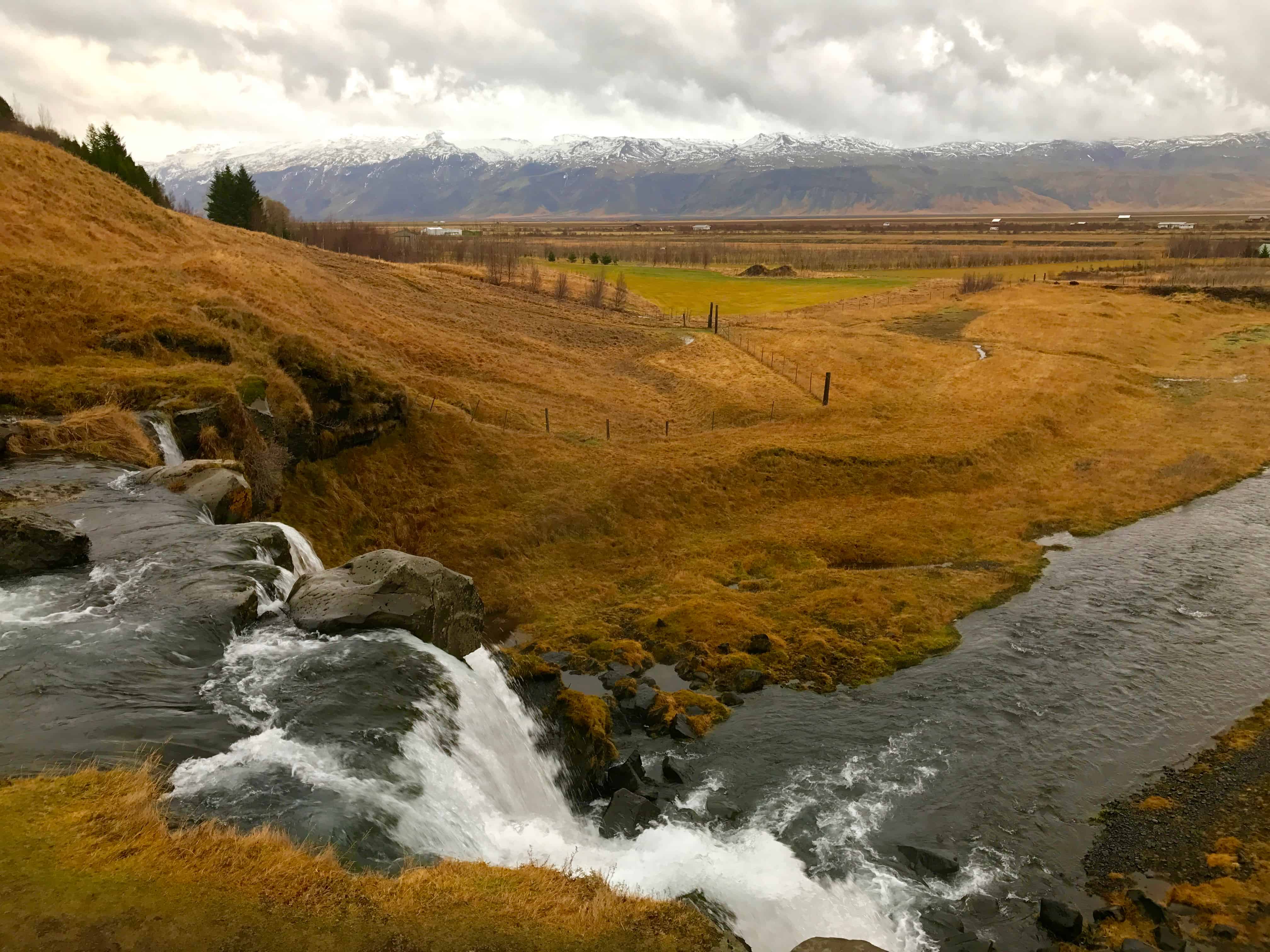
I knew the great volcano lay somewhere close to our base near Vik, now I was learning it was directly beneath my feet.
Katla’s last eruption was back in 1918, but with an average eruption cycle of fifty years or so, many believe she is well overdue and that pressure is building under the 650-metre-thick ice cap. Recent unrest in the mountain has scientists paying close attention.
“This one will stop the world,” says our guide. “You remember the eruption of Eyjafjallajökull in 2010? The one that shut down European airspace? This one is much bigger.”
We all laugh a little nervously and glance over at our idle snowmobiles. Getting here has been an adventure in itself: a slippery, bumpy truck ride up onto the Mýrdalsjökull glacier followed by a thrilling snowmobile spin over snow and ice through a total white-out.
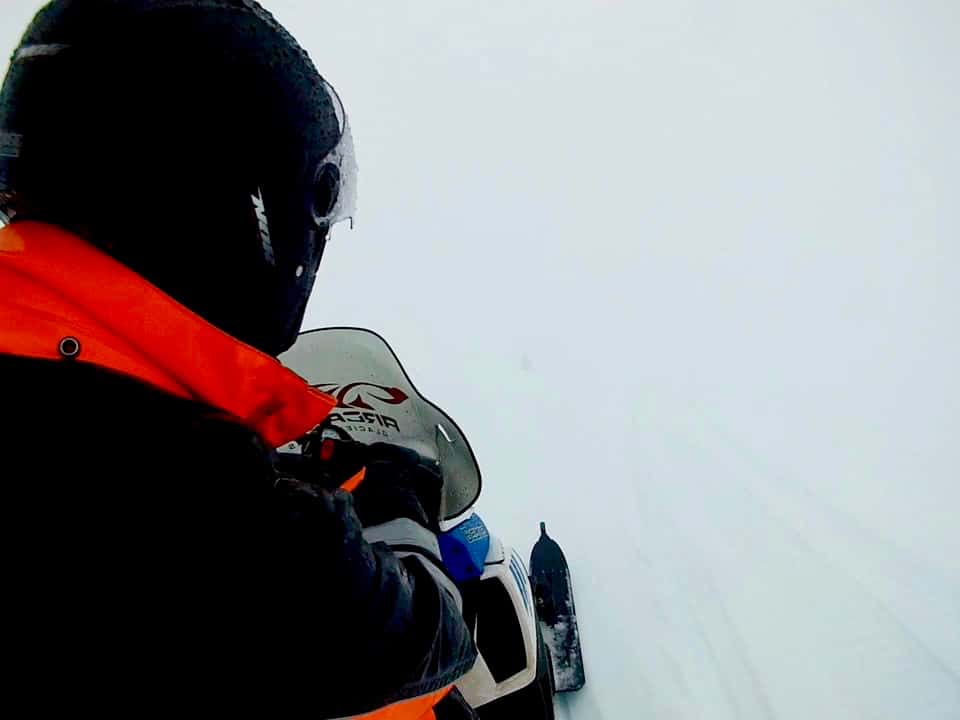
The mist was so thick when we first arrived at the check-in shack, we weren’t convinced the tour would even go ahead. Our guides though, professional and practical, were enthusiastic: “Just stay on the track, stay in a line, have fun!” they declared as we took off into the fog.
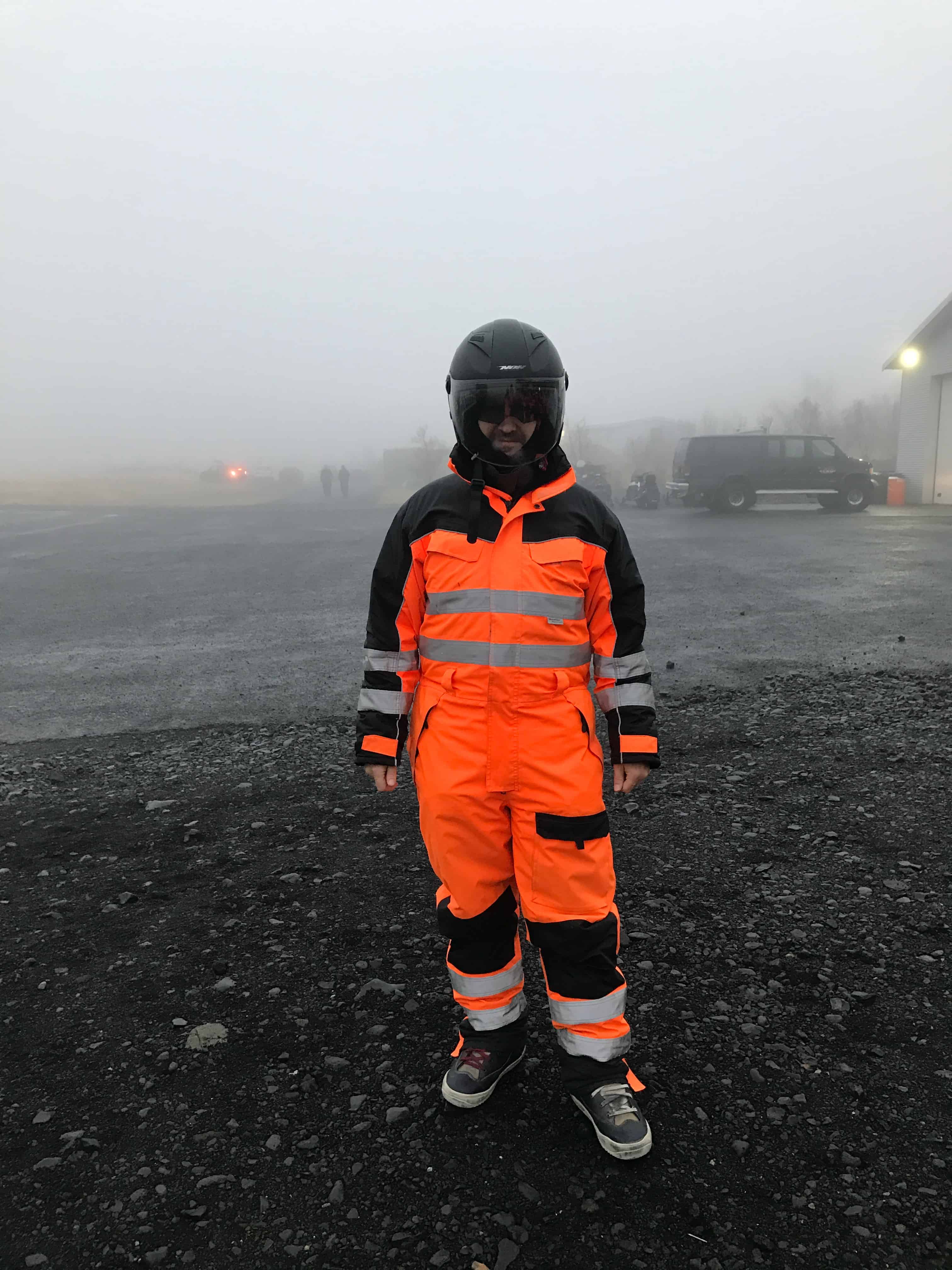
I spend most of the ride yelling in John’s ear to slow down/speed up/stick to the track. He tells me later he’s so focused on trying to keep the guide ahead in sight through the sleet and mist that he doesn’t hear a thing through his helmet. Convenient.
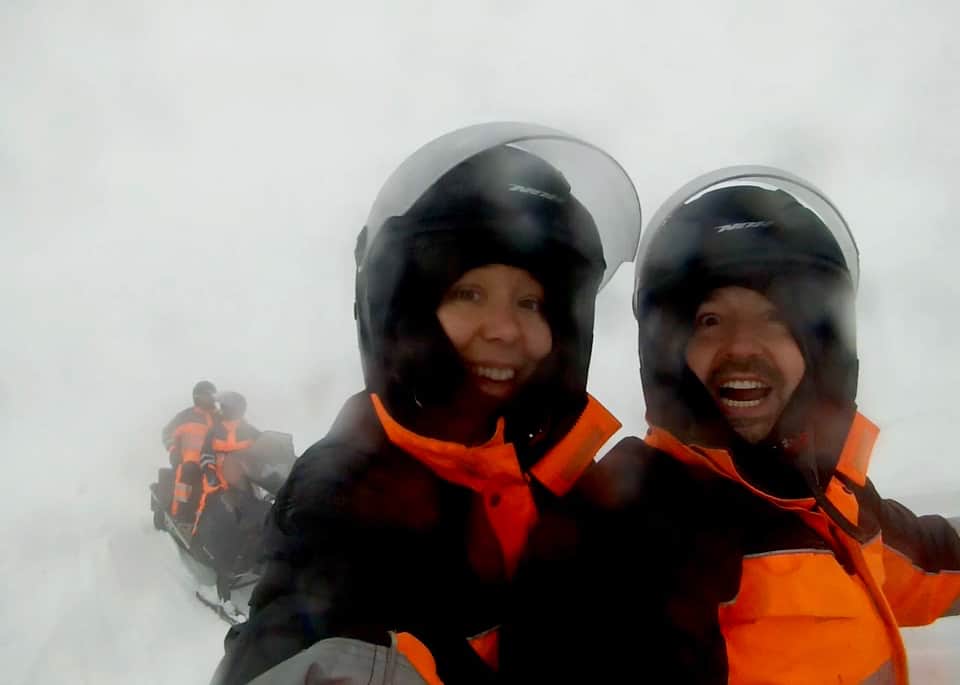
We first heard about snowmobiling on Mýrdalsjökull through friends who visited Iceland in the summertime. Their photos showed brilliant blue skies and beautiful, expansive panoramas over the glacial fields to the south coast.
Unpredictability, though, is a constant companion of travel in Iceland, particularly in the winter, and our thrilling ride – shrouded in a thick, white cloud – feels a bit like an extreme sport.
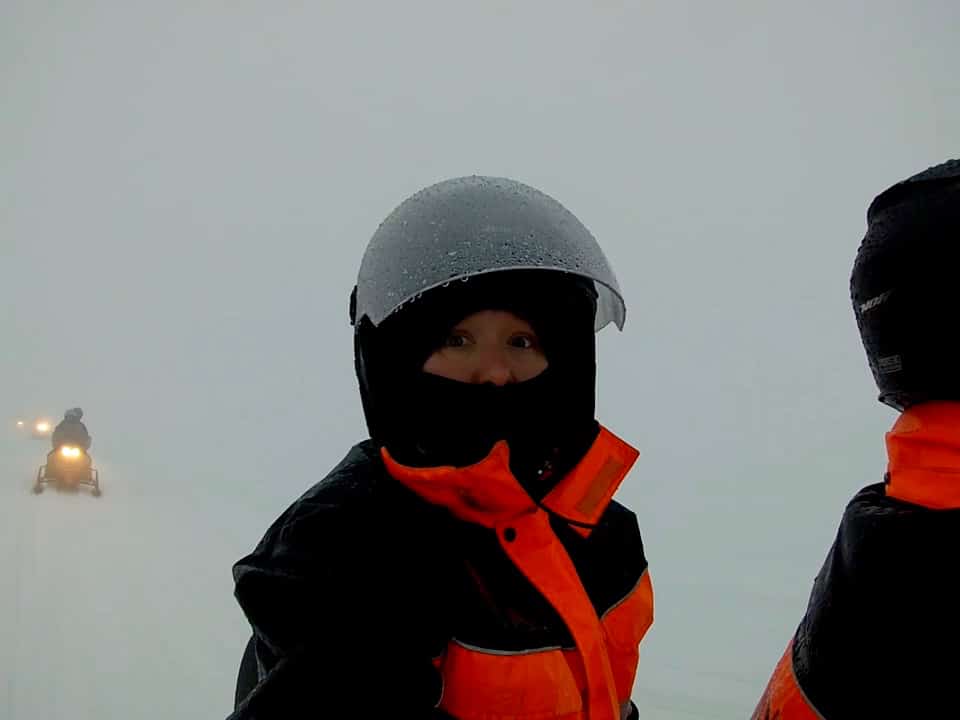
Later, as we glide back through the fog towards the trucks, I whisper to Katla to hold onto her icy hat just a little longer.
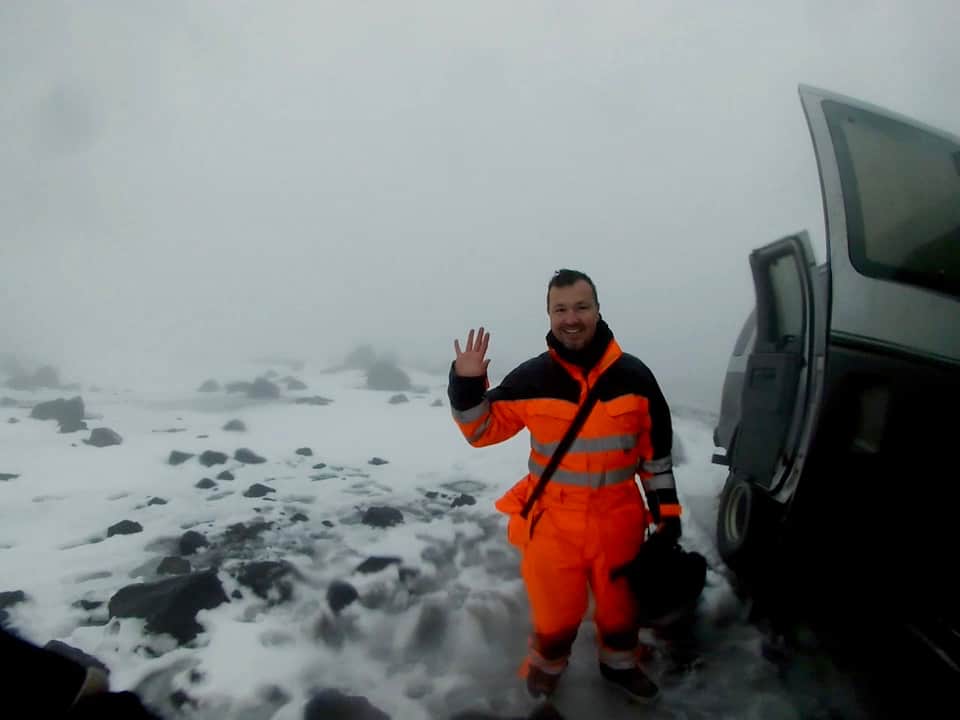
At the excellent Eyjafjallajökull Erupts Visitor Centre the next day, we learn more about the risks and realities of living in this geothermally tempestuous region.
The locals, though, are pragmatic about the future. When we ask a local horse farmer what he thinks about the potential danger on his doorstep, he simply shrugs, “what can you do?”
His response is typical of the resilient people who inhabit this feisty, beautiful island. We all agree that heading to the pub might just be the best option.
Good to know
Join a tour: Various outfits offer snowmobiling tours in Iceland. We joined Arcanum Glacier Tours for our snowmobiling experience on Mýrdalsjökull glacier. The tour was around two hours including the truck ride to and from the glacier; overalls, boots, hood and helmet were provided. You need a valid driver’s licence if you’re going to be the pilot.
Getting there: Arcanum tours depart from their base in Mýrdalur, which is in Iceland’s south, around 11km east of Skógar and 25km west of Vík. If you’re coming from Reykjavík, factor in at least two hours’ driving for the 160km run.
Tip: Warm, waterproof gloves are essential – bring your own or borrow a pair from the operator. Layer well for the cooler air up on the glacier and bring a change of clothes if the weather is dicey. The overalls we were given provided fair protection against the wind and chill but the sleet found its way in and our pants were soaked by the time we got back. No one likes a cold, wet bum.
Don’t miss: The Eyjafjallajökull Erupts Visitor Centre, on the Ring Road 10km west of Skogar, offers a fantastic insight into Iceland’s volatile volcanic environment with exhibitions and a film on the impact of the 2010 Eyjafjallajökull volcano eruption on a local family. Visit their website for opening hours.
Sound like your kind of experience? Check out more pics and stories from our travels in Iceland.
